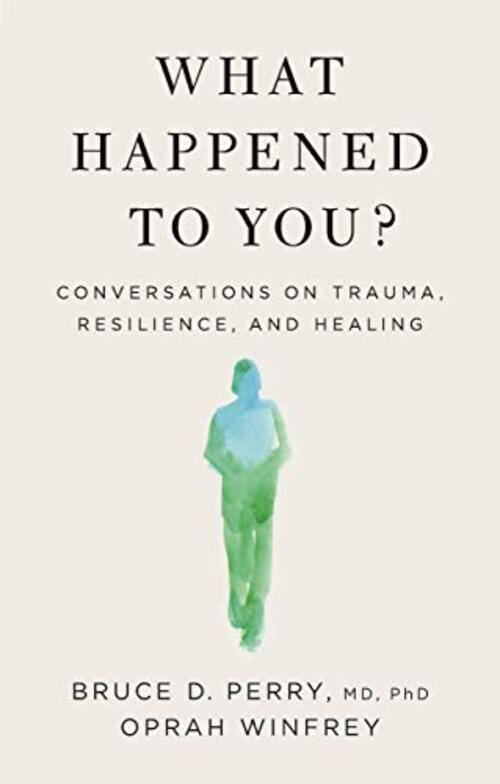When most people think of asylums, they think of a horror movie like Gothika or one of the various ghost hunting reality shows. Perhaps they also think of a horror novel like ASYLUM by Madeline Roux or one of the D.C. comic book villains being sent to the ridiculously easy to escape Arkham Asylum. Fear has permeated many of our perceptions about mental health treatment due to the harshness and cruelty of the past. Like many others, I have someone I loved who spent time in an asylum back in the earlier part of the 1900s. She rarely spoke of her repeated trips for “treatment” that included involuntary incarceration, electroshock therapy, and even a forced abortion. Richer families would send their loved ones for a visit to a home for “convalescent care” where they lived with other women and helped with the chores around the home until they were “better”.

My curiosity about how mental health treatment has evolved (and thankfully it HAS greatly evolved and improved!) led me to a phenomenal nonfiction book entitled DAMNATION ISLAND by Stacy Horn. DAMNATION ISLAND is a horrifying yet, unfortunately, true chronicle of Blackwell’s Island – a dumping ground for anyone the city deemed indigent, criminal, insane, or simply inconvenient. Stacy Horn makes marvelous use of past historical records to weave together a sad and horrifying tale. Hydrotherapy was apparently a popular treatment for a time and sounds more like torture than treatment. There are some bright moments, such as when journalist Nellie Bly goes undercover at Blackwell’s for 10 days and writes a stunning expose of the maltreatment and horrific conditions. See her book TEN DAYS IN A MAD-HOUSE for her nonfiction account for more details. Her expose brought about a huge influx of money to Blackwell’s to address the conditions and some positive improvements did happen, although not nearly enough.
My interest in what happened to Nellie Bly during her 10 days at Blackwell’s Island led me to THE MAD GIRLS OF NEW YORK by Maya Rodale. While fictional, Maya Rodale does a spectacular job at depicting the despicable and often disgusting conditions at Blackwell’s Island. The story is both compelling and disturbing, as it’s hard to imagine a society thinking those conditions were acceptable for anyone. The Author’s Note at the end has sparked my interest in other stories, as many of the fictional characters are based on actual historical figures, and I want to dive into their worlds and lives. Maya Rodale’s THE MAD GIRLS OF NEW YORK is a must-read for anyone who wants a taste of just how poor the system was back then, particularly for women.

On this same theme, and again with mentions of Nellie Bly, Fiona Davis’ THE ADDRESS alternates between the late 1800s and the mid-1980s. We meet Sara Smythe, a young woman who travels to America to help open the Dakota in New York City and is granted a position and authority not often bestowed on women at that time. In the mid-1980s, we meet Bailey Camden also residing in the Dakota after a stint in rehab for her drug and alcohol problems. Fiona Davis digs deeply into family secrets, substance abuse and its impact on people and relationships, as well as the mental health and criminal justice systems of the late 1800s as she intertwines the story between the two timelines in this phenomenal tale. Definitely another must-read!
Poor treatment for those with mental health issues wasn’t unique to America, either. In THE MAD WOMEN’S BALL by Victoria Mas we learn about the September 1792 massacre that occurred when the women imprisoned in Salpetriere were freed. Now, in the Mas’ tale set in the 1880s, women are treated much better at Salpetriere, but they are still subjected to the whims of the doctors. Women were used as guinea pigs for treatment and research into neurological conditions. Women are paraded into the lectures of Dr. Jean Charcot, where some treatments include pressing upon the ovaries. Once a year, all the finest nobility of Paris attend THE MAD WOMEN’S BALL at Lenten, where the women of Salpetriere dance and mingle among them. I only wish this book was completely historical fiction as Victoria Mas brings to life a not often mentioned, but horrible and shockingly true part of the past.

Laura Kinsale’s FLOWERS FROM THE STORM chronicles how even men were imprisoned for conditions such as a stroke, as they were considered mad rather than addressing it as a medical condition. I love that Laura Kinsale shows us how words sound to the Duke of Jervaulx, even as he remembers the mathematics he dearly loves but can’t yet verbalize after his stroke. Another historical romance that features a hero who was locked away for a time and abused because of a condition not understood at the time, is the classic Jennifer Ashley novel THE MADNESS OF LORD IAN MACKENZIE. In it, Ian Mackenzie is a character with Asperger’s Syndrome. The author throws in glimpses into his past when his wicked father had him briefly committed. In the story, Ian experiences some moments of PTSD from his experiences, but over the course of the series, he’s able to broaden his horizons and life a full life with family and friends who love him and accept him for who he is. For a paranormal spin on historical “medical” atrocities, WYNTER’S BITE by Brooklyn Ann features a mortal human and a vampire who fall in love in the early 1800s. Vampires are supernatural creatures and claiming to have met or had experiences with one might understandably sound crazy. While it’s against the vampire rules to tell mortals about their existence, the hero agonizes over how to make things right and find happiness with the woman he loves. I love how Brooklyn Ann explores this conundrum during a time when even Bethany’s love of reading is thought to be too fanciful and worrisome.

How did we get here? Well, as Nellie Bly noted in her expose about Blackwell’s Island, the standards for what constituted a diagnosis were vague and even nonexistent. In fact, some doctors thought women suffered from “a wandering uterus”! The DIAGNOSTIC AND STATISTICAL MANUAL OF MENTAL DISORDERS, commonly called the DSM, was created in 1952 to establish standards for the mental health industry for diagnosing mental health issues. MASTERING THE DSM 5 by George Haarman references the Rosencrans Study which examined inter-relater reliability using graduate students in a similar fashion to Nellie Bly’s own adventure as they sought admission into state psychiatric hospitals. Many different diagnoses were given and thus the DSM was revised for more specificity. The manual continues to be revised, as the DSM-V-TR is now available.
So, what now? Oprah Winfrey and Dr. Bruce Perry have a wonderful book entitled WHAT HAPPENED TO YOU? CONVERSATIONS ON TRAUMA, RESILENCE, AND HEALING. Oprah Winfrey and Dr. Bruce Perry dig into the shift that is occurring in the mental health field towards trauma informed care, where we ask, “what happened to you?” rather than, “why did you do that?” The shift may sound like linguistics but take a listen (and I highly recommend this book on audio as the two authors alternate speaking as they compare the science versus personal experiences of Oprah Winfrey and her various guests over the years) as you’ll see how trauma and life experiences shape our brains and our responses. If you or someone you love needs help, please get help. And if you love someone who struggles with mental health, stop, and listen to WHAT HAPPENED TO YOU?
If you need help, please reach out to the suicide hotline at https://suicidepreventionlifeline.org/
Debbie Wiley is a senior reviewer at Fresh Fiction. You can find more of her articles and reviews here.


No Comments
Comments are closed.